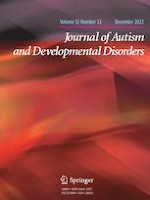22-01-2022 | S.I. :Expanding Telehealth Opportunities in Neurodevelopmental Disorders
Identifying Patient Characteristics to Understand Which Children May Receive Diagnostic Clarity in a Virtual Autism Spectrum Disorder Evaluation
Gepubliceerd in: Journal of Autism and Developmental Disorders | Uitgave 12/2022
Log in om toegang te krijgenAbstract
Given long waitlists for autism spectrum disorder (ASD) evaluation coupled with the COVID-19 pandemic, it is crucial to triage patients to services they are likely to receive diagnostic clarity (i.e., virtual, in-person evaluation). Participants attended a virtual ASD assessment. A subset also attended in-person evaluation. Results suggest younger children with educational services for ASD may benefit from virtual assessment while older patients with a history of psychiatric conditions may benefit from in-person evaluation. An ASD symptom severity tool related to virtual and in-person diagnostic clarity. Family history of ASD related to in-person diagnosis while other variables (e.g., age, educational services) did not. The study suggests patient characteristics may be used to determine for whom virtual ASD assessment may be appropriate.
